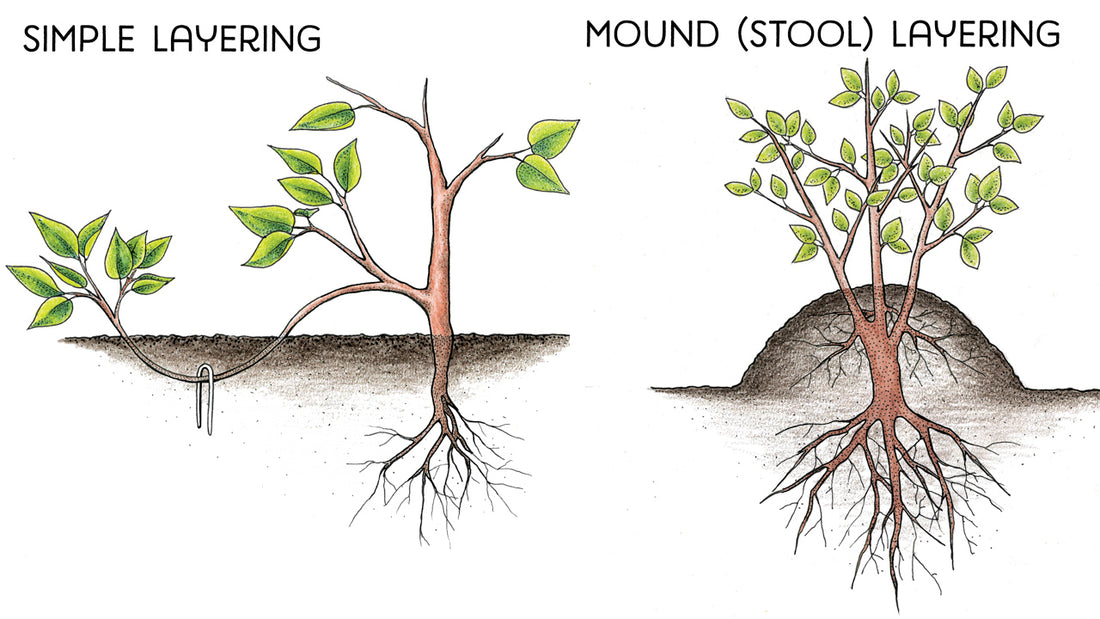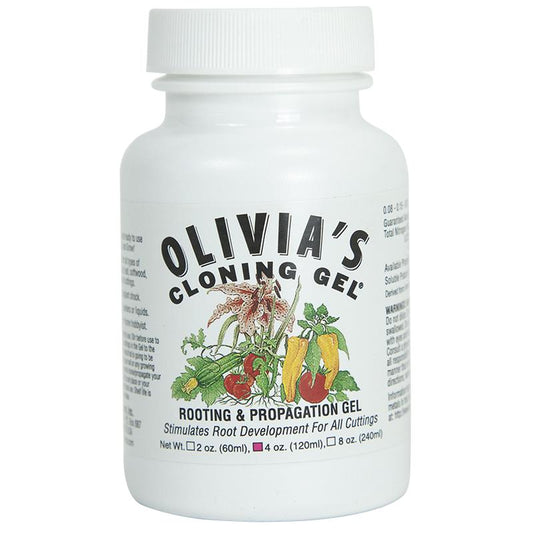Protecting the Roots and Your Plants
If you’re looking for a low risk, low cost way to propagate your garden plants, try the technique called layering. Unlike other methods such as cuttings and grafting, layering allows you to establish a good strong root system on the new plant before separating it from the mother plant. And unlike dividing, only the new layered plant will be relocated, thus keeping the mother plant’s root system intact and undisturbed.
Plants That Propagate by Layering Naturally
Numerous plants (such as cane berries, strawberries, and ivy) naturally propagate by layering, and others (including many flowering shrubs, herbs, and trees) can be induced to form new plants either by ground or air layering.- Blackberries-tip layer. If allowed to grow and touch the ground, the lateral branches will start to produce roots at the point that comes in contact with the soil.
- Strawberries-runners are formed that eventually form a new plant and root.
- Succulents-some produce offshoots that result in new daughter plants (hens and chicks come to mind).

Methods of Ground Layering
There are several types of ground layering you can try.- Simple layering
- Tip layering
- Serpentine (compound) layering
- Mounding (stooling) layering
- French layering
All layering, except with plants that naturally form adventitious roots such as runners, should be wounded to encourage root formation along the stem or branch. Wounding simply involves removing or breaking a bit of bark or the outer layer of the stem, either by peeling off a small piece of the stem, making a small sloping cut into the stem, or twisting the stem until it cracks. The wound should be made on the bottom side of the stem or branch, as this is where the roots will emerge. Root formation can be further encouraged by coating the wound with a rooting gel, which contains naturally occurring hormones that trigger root growth. For ground layering, you can additionally irrigate with Rooting Solution regularly until well rooted.
Simple Layering Method
- Usually done in the autumn or early spring.
- Select a stem that is one or two years old, wound it, and bend it down to the ground.
- Pin it in place and lightly cover it in soil, ground staples work well.
- Alternately, you can dig a shallow trench into which it will be pinned.
- The daughter plants are typically ready to sever from the mother after a few months to a year.
- In autumn you can separate them out to root up in individual pots, or transplant them directly into the ground in the spring when the soil has begun to warm.

Tip Layering Method
- Some plants, such as cane berries, prefer to root at the tip instead of mid-stem.
- Dig a hole 3-4" deep and insert the tip of the shoot.
- Cover with soil
- Examples of plants that is readily propagated are purple and black raspberries and blackberries.
Serpentine (Compound) Layering Method

- Done in the same way as simple layering, except that multiple points are rooted along the same stem.
- This method is good for plants that produce long shoots each year, such as clematis, and creates more daughter plants than simple layering.
- To achieve this, wound and bury the stem (in the same way as with simple layering) between each node or bud.
- Good for plants that produce vine-like growth like grapes, wisteria, heart-leaf philodendron or pothos.
Stooling Layering Method
- Hard prune a shrub in late winter and mound the shoots with soil in spring when they’ve grown to 6–8 inches in height.
- Roots will then grow on each shoot where it is buried.
- The following autumn, the mounded dirt is removed and each shoot is pruned off and planted individually.
- This method works well with daphne, spirea, apple rootstocks, magnolia and cotoneaster.
French Layering Method
- A type of stooling that produces several plants per stem.
- After hard pruning in the early spring, the shoots are allowed to grow for a year.
- The next spring, trim off the growing tip, bend the shoots horizontally, peg them to the soil and bury them.
- Each shoot will grow roots and produce numerous side-shoots (new vertical stems).
- The side-shoots are repeatedly mounded through the summer to a final depth of 6 inches of soil.
- In the autumn, the side-shoots are dug up, separated, and planted individually.

Mounding Layering Method
- Very similar to stooling, except that the plant does not need to be hard pruned, and the rooted stems are ready within a few months.
- In the spring, bury the plant except for an inch or so of the top.
- By late summer, the stems will have formed roots.
- Dig them out, cut them off from the parent plant, and transplant them.
- This method works well for old, woody perennial herbs like thyme, rosemary and lavender, and for closely branched shrubs like flowering quince.

Air Layering Method
- Used on tree branches and other elevated stems that cannot be bent to ground level, and for plants that are difficult to root by other means.
- Use on plants such as camellia, citrus, and rhododendron.
- This can be done in the spring on the previous year’s growth, or in the late summer on the current year’s growth.
- It will be most successful on branches that are at least pencil-width.
- Remove the leaves in the section to be rooted, wound the bark, and cover the site with a 4 inch-thick layer of moist sphagnum moss.
- Then enclose the moss in sturdy plastic wrap that is sealed on both ends.
- Once roots have formed and are visible through the plastic, remove the plastic (but not the mossy layer)
- Prune off the branch just below the moss, and transplant it.
- This can take as little as two months or up to a full year, depending on the plant.



2 comments
George, I would possibly do more research on propagating apples. But it is worth a try to air layer a branch from the tree. I would do it once the tree starts to come out of dormancy. We sell rooter pots or you can use the plastic bag method as well.
I have two types of apple trees…the first is an old favorite here on the farm and I suspect I should air-layer it before it dies on me; the other is a Courtland about 10 years old semi-dwarf. What is the best weather to do this (I live in Brrrrrr Wisconsin just across the river from the Twin Cities)